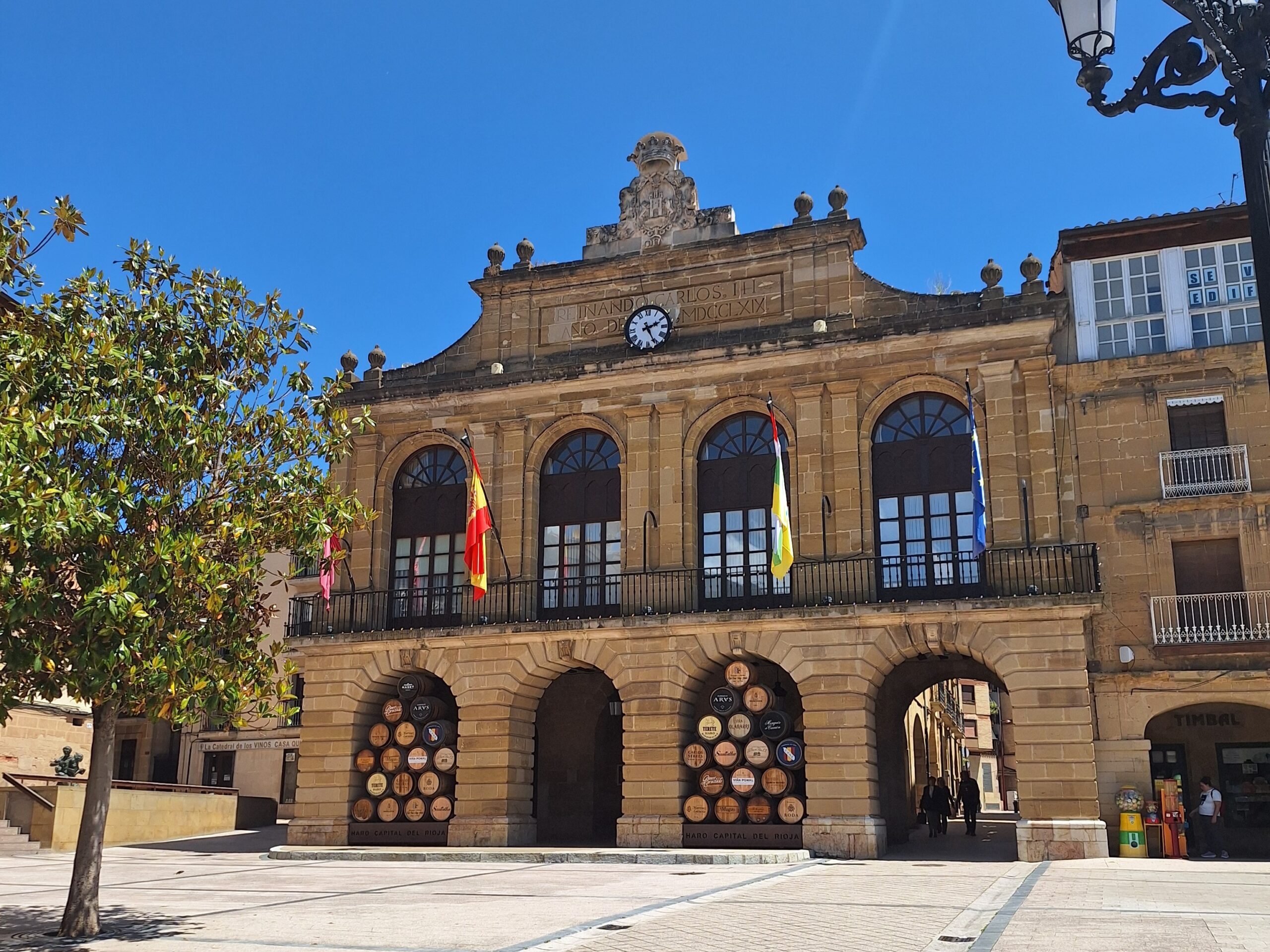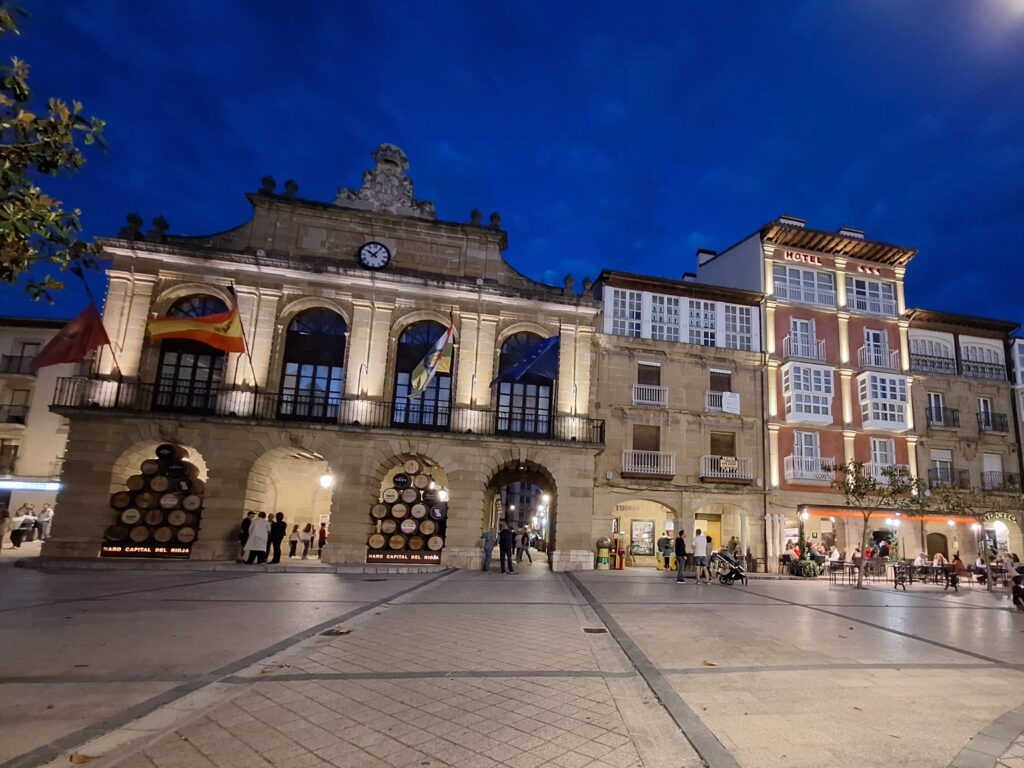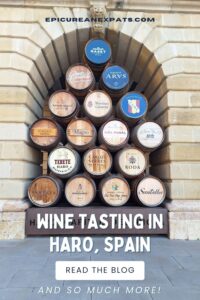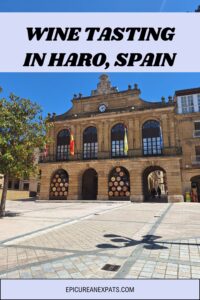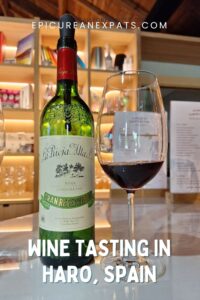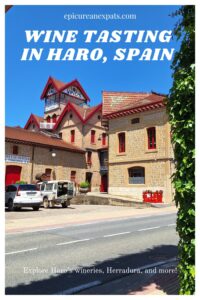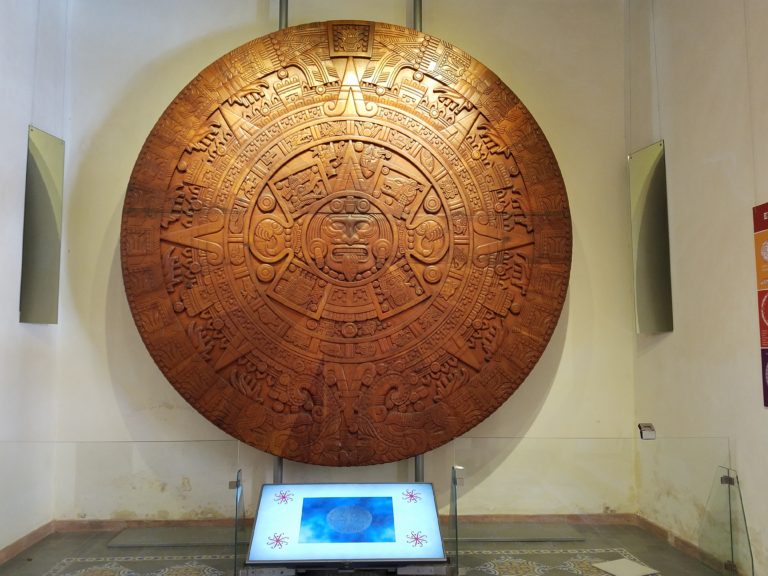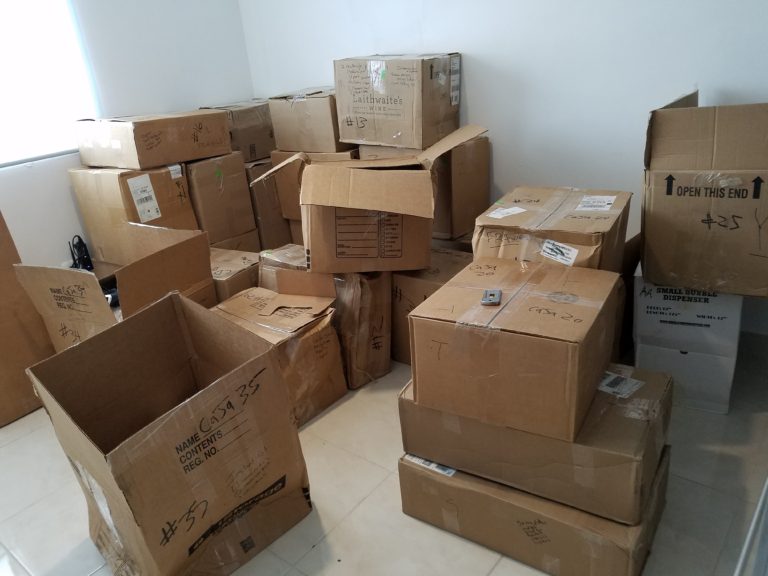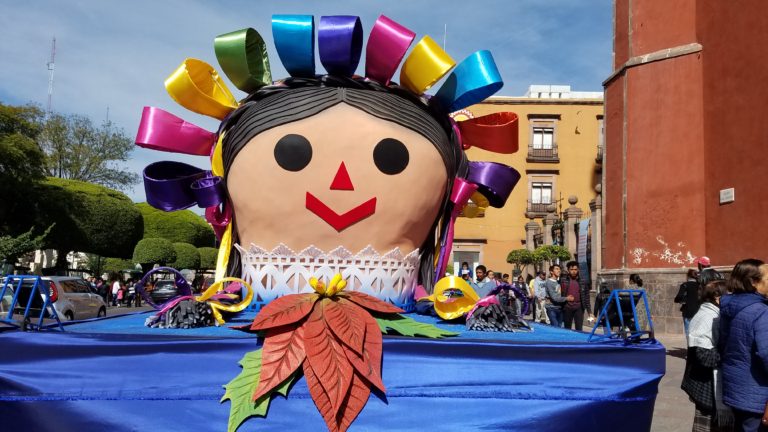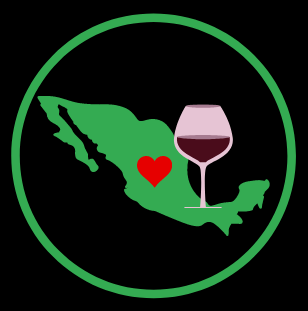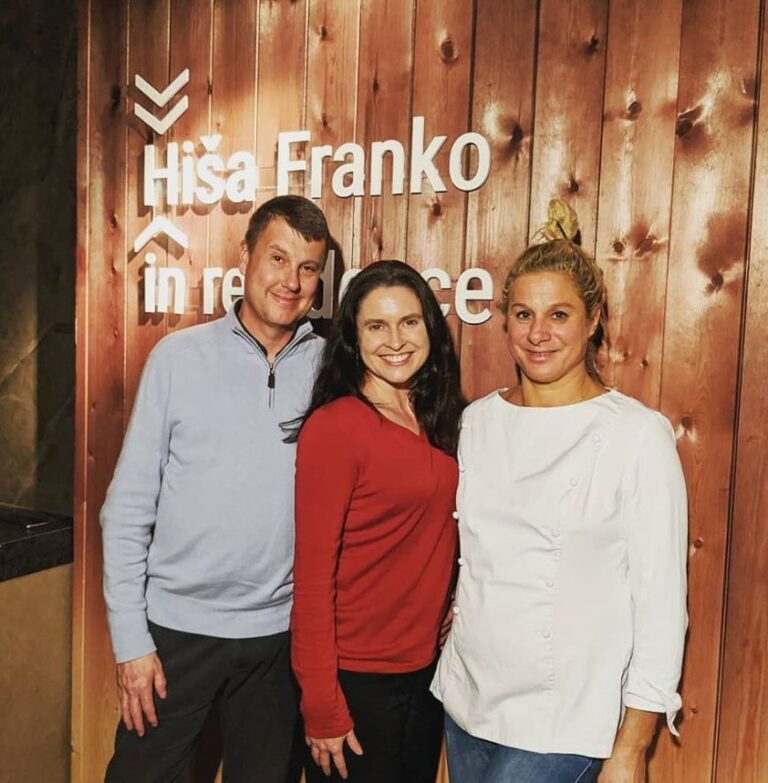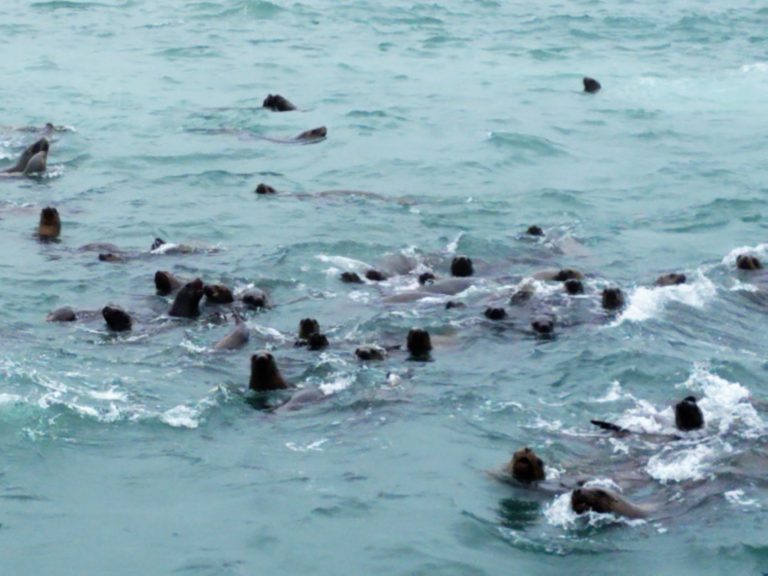Wine Tasting in Haro, Spain
If there is one place in the world that every wine lover should visit, it’s Haro, Spain. With a viticulture history dating back to the Phoenicians, medieval architecture, and several wineries within walking distance of each other, Haro is an oenophile’s Disneyland! Spend a day or two wine tasting in Haro, and explore more of this beautiful town on the banks of the Ebro River in Rioja Alta.
Disclosure: Some links may be affiliate links where we receive a super-small commission if you click through and make a purchase at no additional cost to you. We call this our Chocolate & Churro Fund.
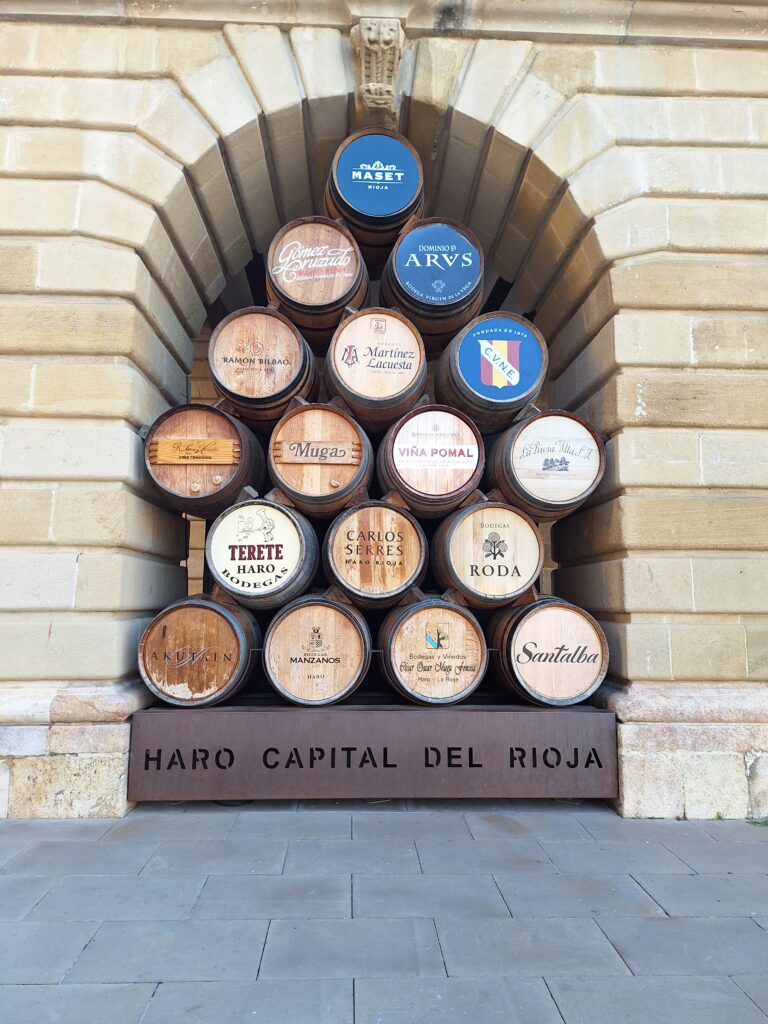
Short History of Haro
Documents dating back to the 11th-century mention Haro and the regional wines. Viticulture has always been an important commodity in the region. In the mid19th-century, Phylloxera, a virus that feeds on the roots of grape plants, ravished vineyards in France.
Winemakers in Bordeaux discovered that the wine from Rioja closely emulated the characteristics of their region. Many of these winemakers established new vineyards around Haro. With the building of the train station, Haro became a center for exporting wine and other goods south to Madrid and north to Bilbao and France.
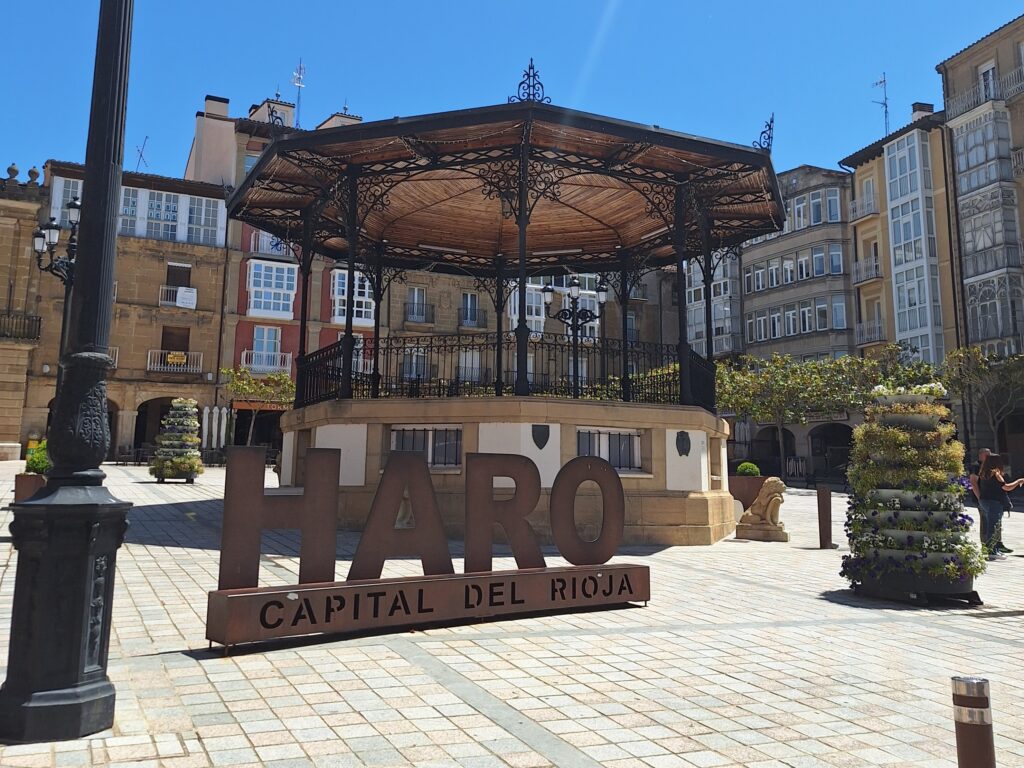
FUN FACT:
Rioja is the oldest Domination of Origin (DOCa) in Spain (1925).
Travel Tips for Haro
If you are driving, parking is hard to find in Haro. Our apartment said there was parking nearby, and it was, but we had to walk a few minutes to it. We did check out the parking garages in town, but the spaces are tight especially for an SUV. Since our goal was wine tasting in Haro and exploring the town on foot, we found a parking spot and didn’t move our car for two days.
If you are taking the train, the train station is where the wineries are. RENFE trains arrive and depart daily.
Buses, trains, and taxis are easy to get from Logrono (30 minutes away).
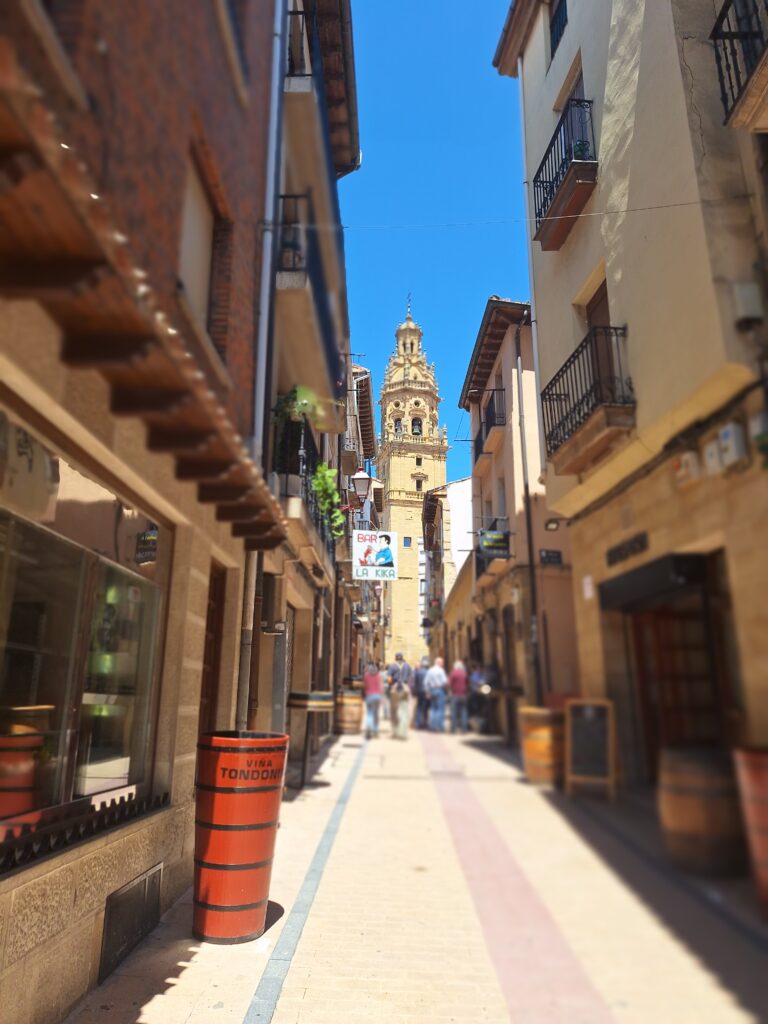
When to Visit Haro
Luckily, wine tasting in Haro is a year-round activity. The vines will start to bud in April and rain is common. The hills will be green in the summer. July and August are the busiest months for tourists and the temperatures are hot during the day. Harvest is in September and October. In October and November, the leaves of the vines turn bright red, and it’s a stunning sight to see.
The wineries all have different hours of operation, but most are open every day. Check their schedules before you plan your trip for wine tasting in Haro.
Festivals in Haro
If a wine town is hosting a festival, you know it’s going to be good! Haro has a few festivals you may want to join:
- June 24- Festival of St. John the Baptist starts at daybreak with bonfires, hot chocolate, and muscatel wine and goes all day long.
- 28-30 June Batalla de Vino (Battle of Wine) or the Feast of San Pedro can be traced back to the 12th-13th centuries when the towns of Haro and Miranda de Ebro would mark the property line between the towns. Today, it’s a world-renown celebration beginning with mass, a morning of dousing everyone with wine using squirt devices, then heading back to Plaza de la Paz for food and music and running around with “bulls” (who happen to be female cows and they are not killed).
- September 8- The festival of the Virgen de la Vega, the patron saint of Haro is celebrated with mass, a competition of verses, a contest for the most beautiful women of the region, and a nighttime procession.
Wine Tasting in Haro
Barrio de la Estación
Your first stop once you cross the Tirón River should be at Barrio de la Estación. Built in the mid-19th century, this railroad station and district was instrumental in Haro making a name for itself.
Horse-drawn carriages were replaced by trains to transport wine, soap, and other products to France and other parts of Spain.
The first winery to open was R. López de Heredia y Landeta in 1877. Compañía Vinícola del Norte de España (CVNE) followed soon after. In 1886, the A. and J. Gómez Cruzado winery opened. La Rioja Alta SA was established in 1890. More than a decade later, Bodegas Bilbaínas moved in. In the late 20th century, Muga and Roda also built their facilities within the district.
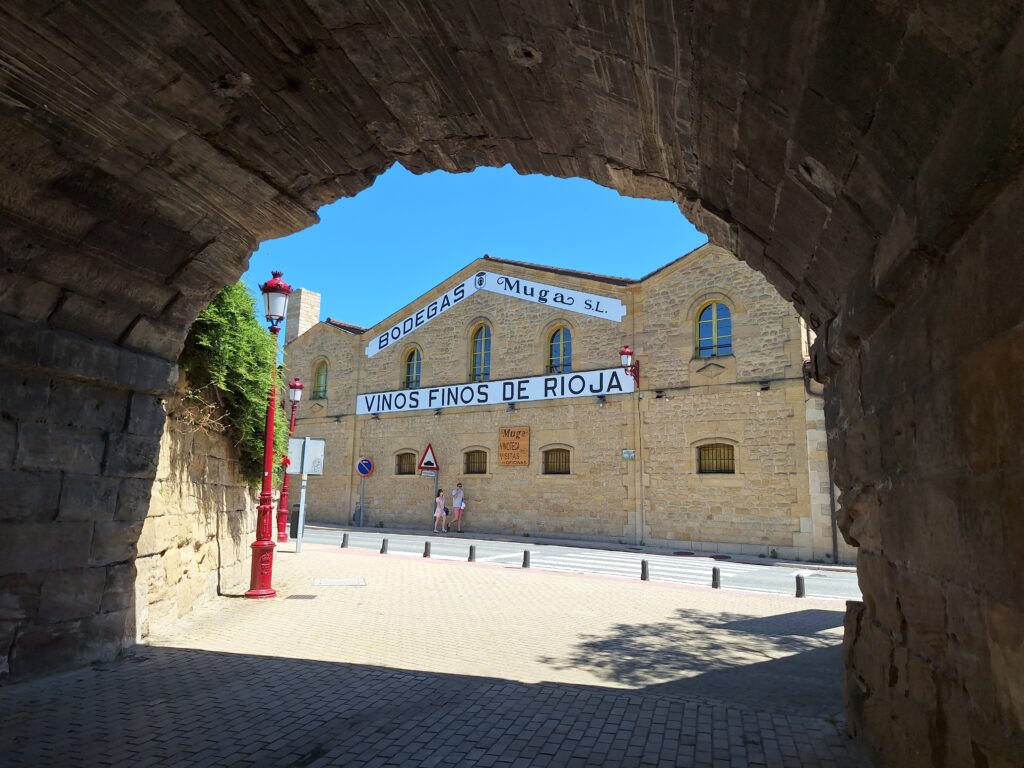
The station offers two wine-tasting tours to three wineries with a tasting and tapa at each. Or you can buy the Passport and visit the wineries on your own. The passport INCLUDES 6 Premium wines , one in each Wine Bar, 6 selected tapas, and a physical passport to be stamped at each winery. It does not include any tours of the winery facilities. The cost is 42 Euros.
If you prefer to go wine tasting in Haro on your own, you can do that too. All the wineries except Lopez de Heredia have wine bars where you can buy wine by the glass.
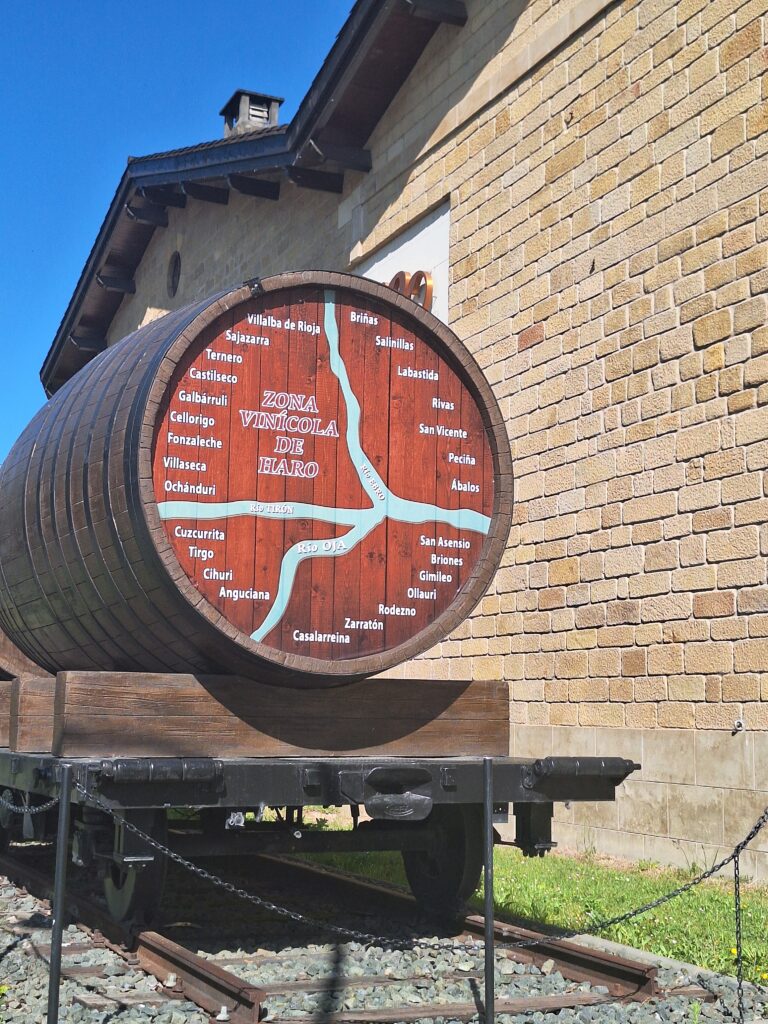
López de Heredia – Viña Tondonia
As the oldest winery in the Barrio de la Estacion, Lopez de Heredia is only open to professionals currently in the wine industry. But don’t fret, you can try or buy their wines at almost every wine bar or restaurant in Rioja (and many other places around Spain and the world). This family-owned winery prides itself in making old-style, traditional Rioja.
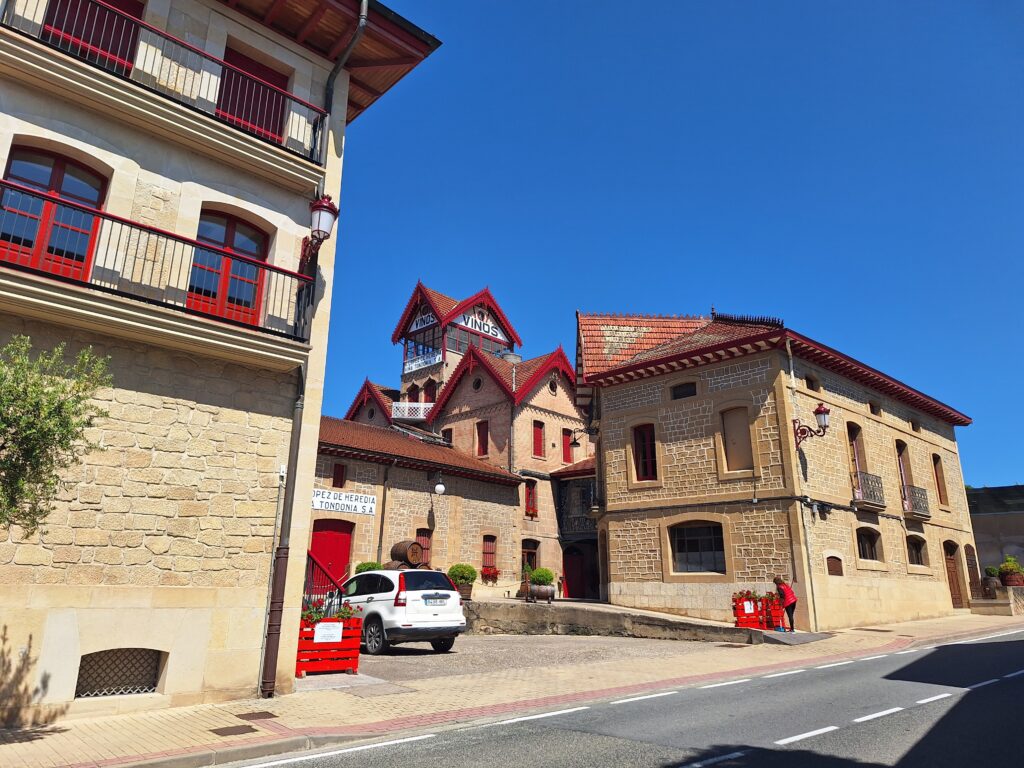
Gomez Cruzado
Gomez Cruzado is the smallest winery in the Estacion neighborhood. Most of their vines are over 80 years old and planted high along the Sierra Cantabria mountain range. The wines stand out for their high acidity and great fruit. Their wine bar is in the barrel room.
We bought a glass of Reserva and a glass of Gran Reserva and sat among the barrels enjoying our wines.
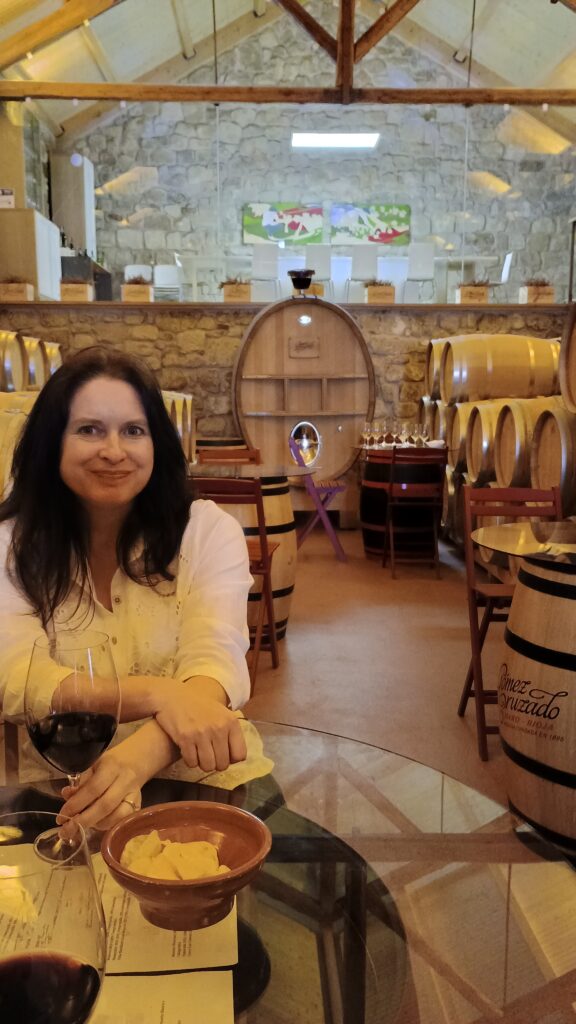
Muga
Muga is a family-owned winery since 1932. It is home to both the most traditional winemaking methods and the latest cutting-edge techniques. They are the only cellar in Spain with a master cooper and three in-house barrel-makers. We enjoyed some of their sparkling wines as well as reds.
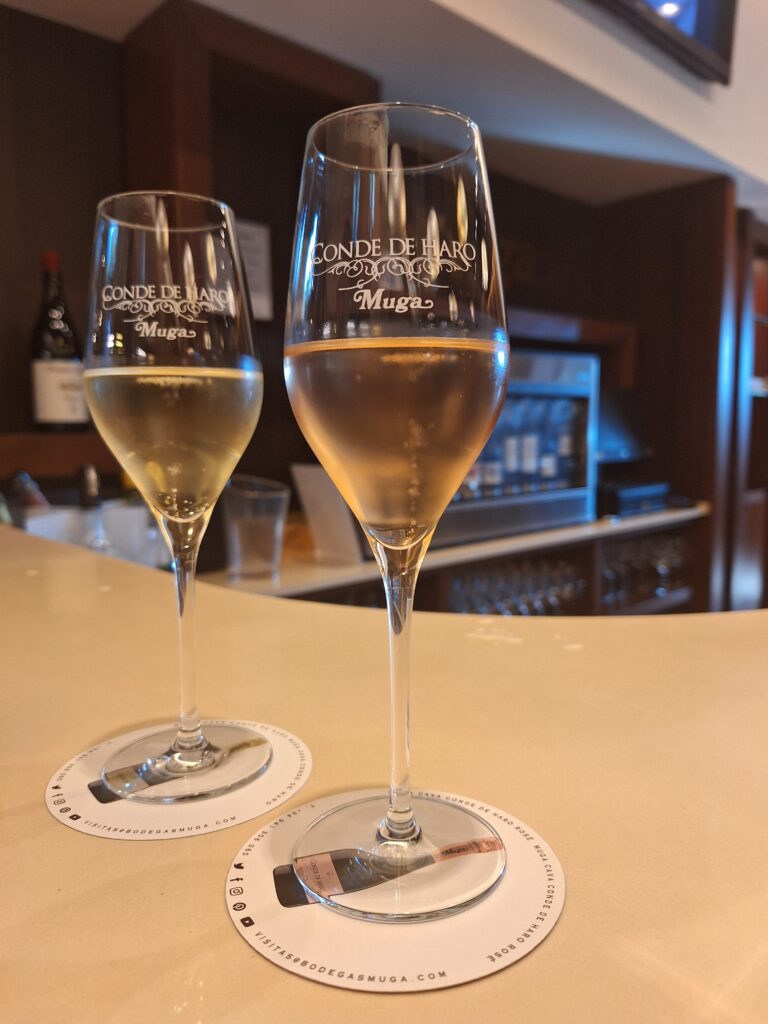
Bilbainas
The winery has more than 250 hectares of vineyards located in the municipality of Haro, and the largest underground cellar (3,400m²) in La Rioja. Bodegas Bilbaínas is also the oldest bottling firm in La Rioja.
In 1925, Bodegas Bilbaínas was distinguished with the title of Supplier of the Royal Household.
La Rioja Alta
In 1890, five Riojan and Basque families founded the “Sociedad Vinícola de La Rioja Alta” in Haro’s Station District. Their first president was a woman, Doña Saturnina García Cid y Gárate. Vina Ardanza and Vina Arana are wines under the La Rioja Alta label.
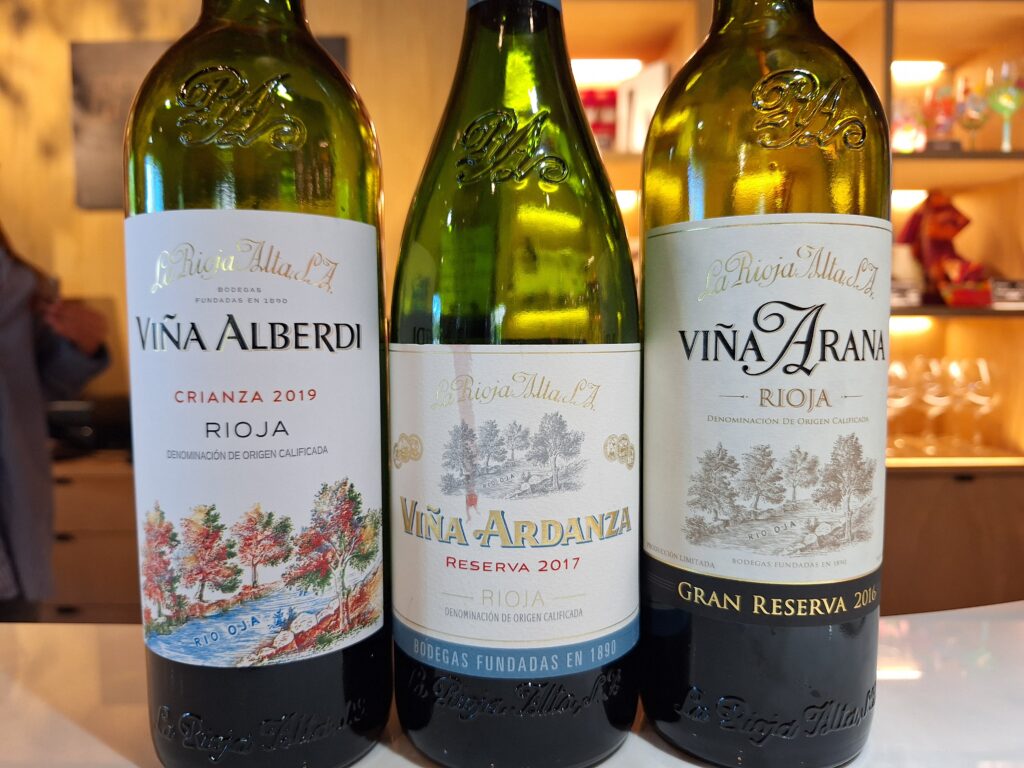
They also make Pazo de Seoane, an Albarino blend, which won the Grand Gold and Best White Wine awards at the 2024 Baco Awards by the Spanish Union of Wine Tasters. Their Torre de Oña winery is the first winery to obtain the Sustainable Wineries for Climate Protection certification.
The wine bar at La Rioja Alta is beautiful and spills out into the courtyard. We enjoyed two glasses of wine with a complimentary glass of a 1997 Gran Reserva 904 for the mix-up with our reservation (this happened more than once on our road trip).
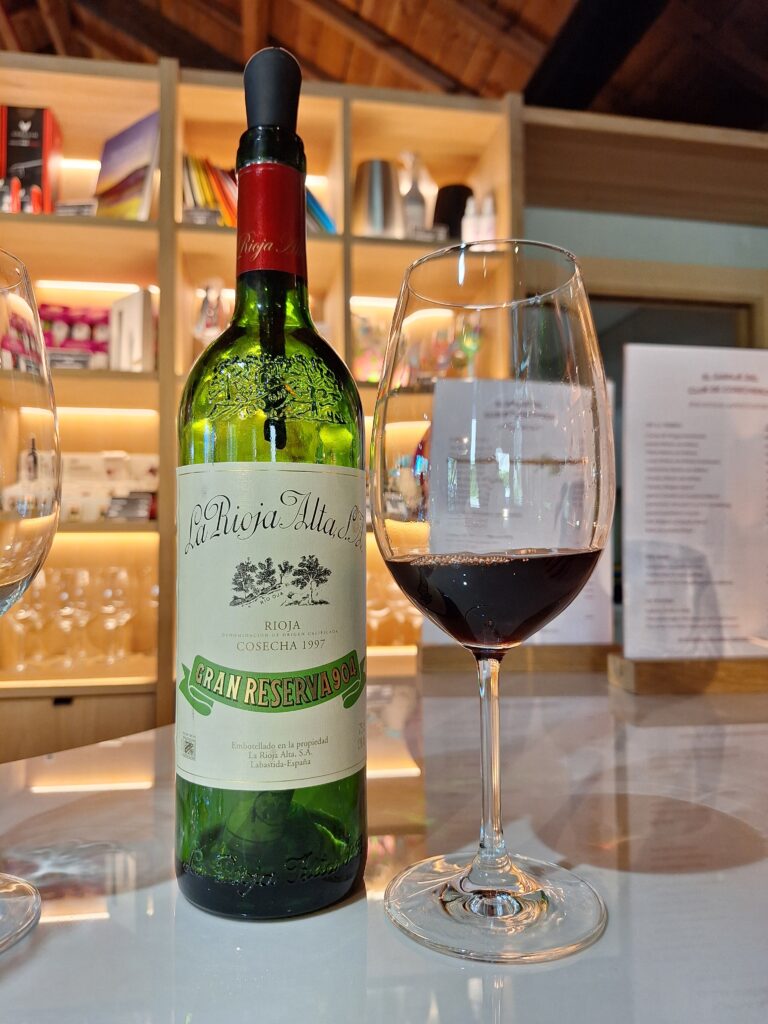
RODA
Bodegas RODA is considered a young winery, established in 1987. They focus on exceptional wines and optimizing energy efficiency and using renewable energies. Roda winery is the farthest from the Barrio de Estacion, and unfortunately, we didn’t make it there.
They offer the usual tour experiences, but also a vertical vintage tasting. Their wine bar is in a 19th-century cellar with a balcony overlooking the Ebro River.
CVNE
CVNE, which stands for Compañía Vinícola del Norte de España (CVNE) is one of the longest-standing family-owned wineries in the world. The original winery opened in 1879 and currently has eight wineries in Spain’s main wine-growing regions: CVNE, Imperial, Viña Real and Viñedos del Contino in Rioja, Roger Goulart in Penedés, Bela in Ribera del Duero, Virgen del Galir in Valdeorras and La Val in Rías Baixas. Monopole is the oldest white wine brand in Spain bottled since 1915.
The original cellar was designed by the famous French architect, Aleixandre Gustave Eiffel, the same guy who built the Eiffel Tower in Paris. In 2013, CVNE’s Imperial Gran Reserva was the #1 Top 100 Wine Spectator.
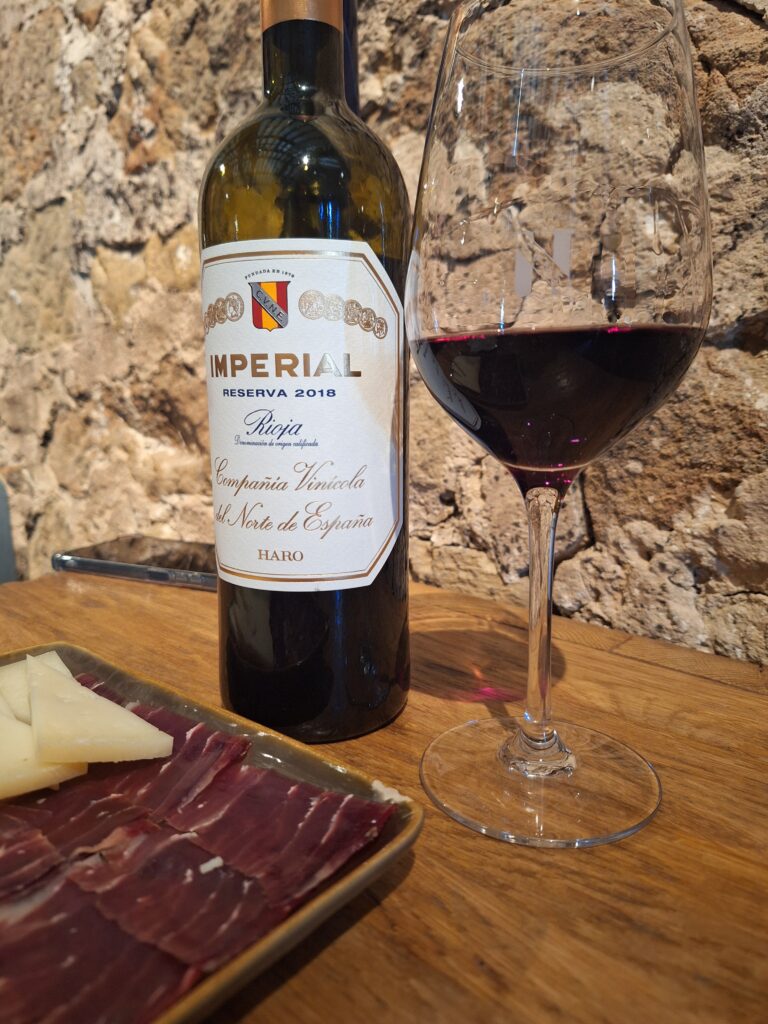
Fun Fact: 1979 CVNE 100th anniversary
To celebrate CVNE’s 100th anniversary, the famous chef Paul Bocuse created a dinner with his young helper Juan Maria Arzak at the winery’s “Garden House”.
Can I Visit All 6 Wineries in Haro in a Day?
It’s not impossible to visit all 6 wineries in the Barrio de Estacion in a day, but you need to pace yourself, be selective on what wines you want, eat more than just the snacks they provide, and drink water throughout the day. Wine tasting in Haro is not a sprint, it’s a journey.
If we didn’t have set reservations with some of the wineries, we would have planned our day better and been able to do all 6 wineries. We only made it to four wineries in one day.
The two tours offered by Barrio de Estacion include visiting three wineries each. You might do one of those tours, then have lunch at one of the wineries, before visiting the last two.
More Wineries Outside of Haro
Carlos Serres and Ramon Bilbao are also well-known wineries. You will need to get transportation to these wineries as they are a few minutes south of Haro.
What to do in Haro
While wine tasting in Haro is the main objective, there’s more to this little town. With its long history of winemaking, you would think Haro would be a metropolis of wine, but quite the contrary. Haro retains its medieval charm with twisting cobbled roads, old churches, and small plazas in the historical center.
The newer part of the city has wider roads, and larger plazas, but the two naturally blend into each other. Statues and murals in the old and new sections celebrate Haro’s wine-making history.
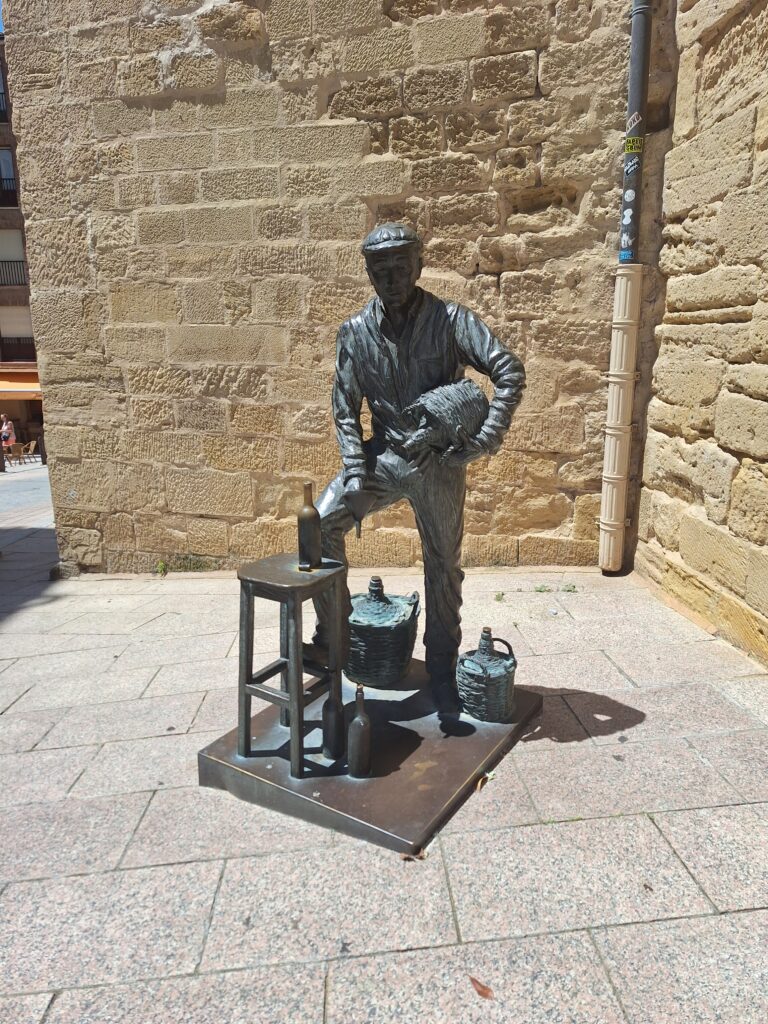
Haro is one of the best wine destinations in the world. You would think Haro would be packed with tourists, but we found just the opposite.
We visited in late May, and the plazas had a handful of people sitting in cafes or walking to the grocery store. It’s a very relaxing town during the day. I guess most people skip the actual town and head for the wineries just a 10-minute walk away.
We did discover that Haro comes alive at night, especially on Saturday night. Bands were playing on two small streets with people dancing and drinking beer. The streets with restaurants and tapas bars were overflowing with people, drinking and eating with friends and family.
Stay for a day or two and get to know Haro for more than just its wineries.
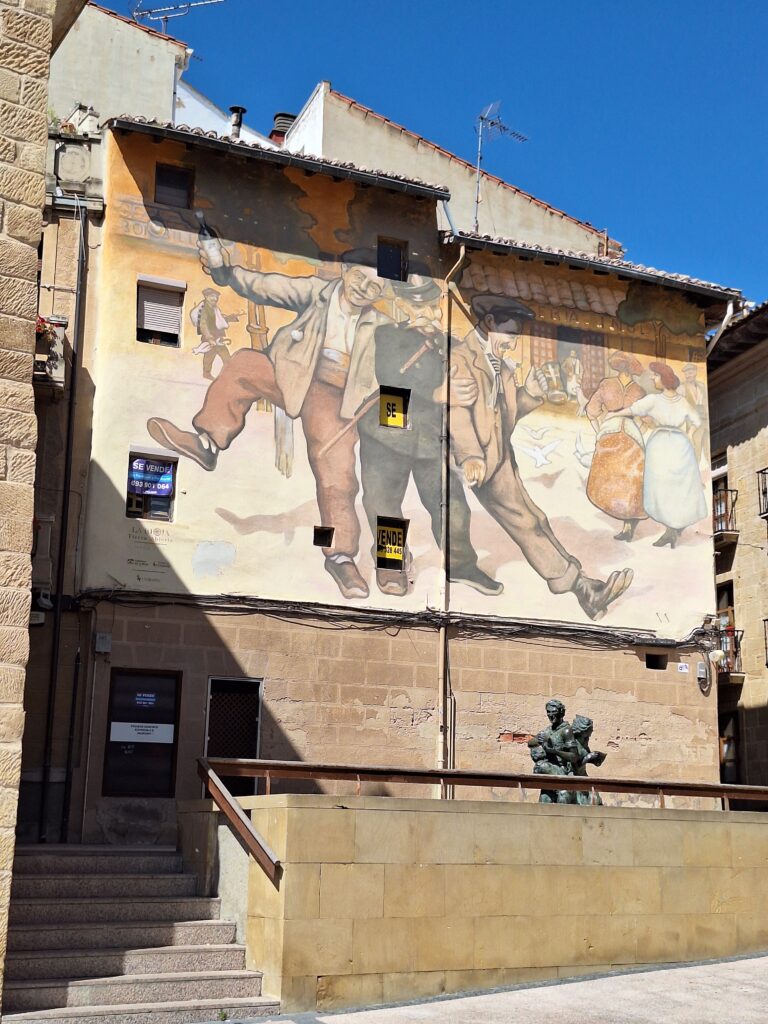
Plaza de la Paz
The heart of the Haro has always been the Plaza de la Paz which has undergone several renovations in the past 100 years. Today, It’s a beautiful square with a gazebo in the center surrounded by small coffee shops, tapas bars, and the tourist office.
Under the archways of the 18th-century town hall, you will see stacks of barrels with different winery names on them and a history of Haro’s wine roots in a picture collage behind it. The clock on the town hall dates back to 1857.
Saint Bernard Gate and Saint Barbara Gate
Two of the original three gates into the city remain, Puerta de San Bernardo on Plaza de la Paz, and Puerta de Santa Barbara on Calle Siervas de Jesús. These gates date back to the 15th century.
Church of Saint Thomas
Built on the second tallest hill in town in the 16th- and 17th-century, this church displays several different architectural styles such as the Plateresque style doors, Gothic-style apse, and Baroque-style tower that can be seen from many parts of the city.
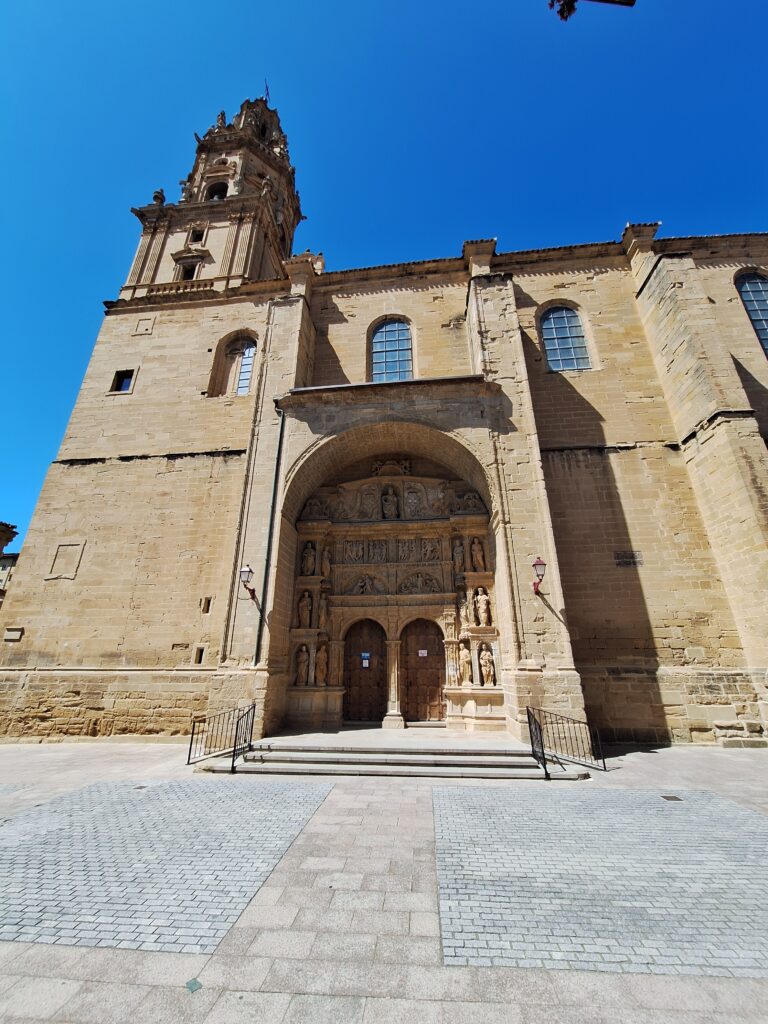
Basilica of Our Lady of La Vega
This church is believed to have been built in the 10th- century but displays mainly Baroque architecture after several renovations. Plaza Marques de Francos is a nice wide park to enjoy a sandwich in. Beside the church is also Café Terraza Kiosco, a nice place to get a coffee and pastry or a glass of wine.
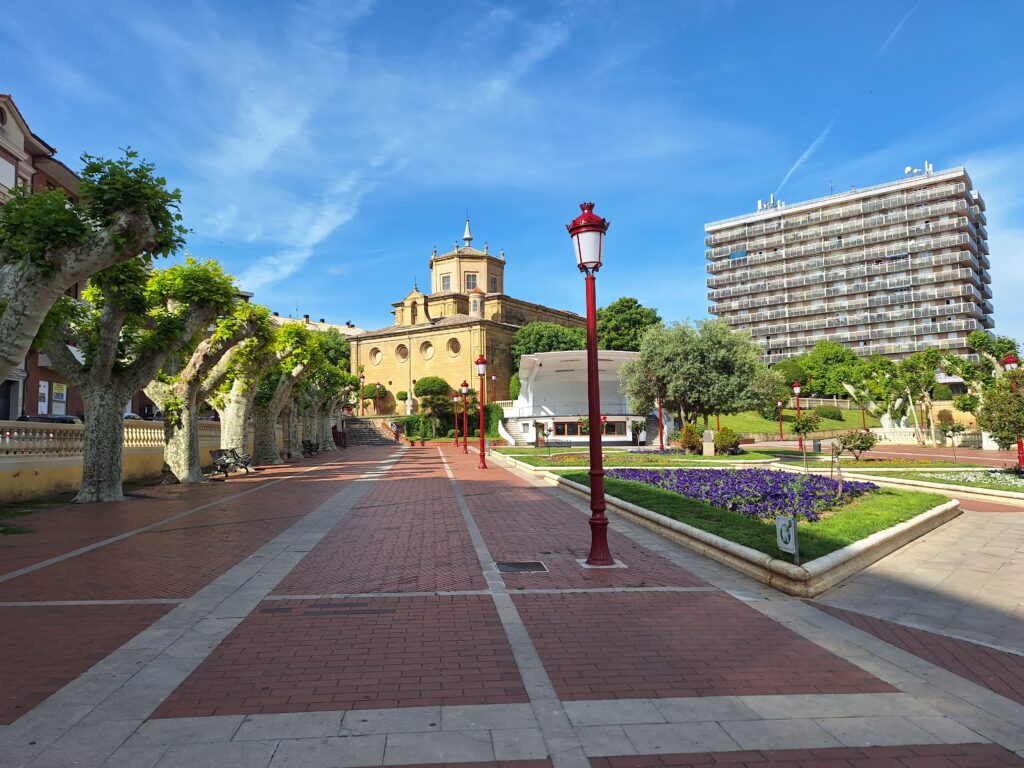
Museum of Contemporary Art of Haro El Torreón
This museum showcases the art of local artists from Haro and the Rioja region. This building is part of the city walls that defended the town in the 12th-century.
Bendaña Palace
Currently being renovated to house the new tourism office, this palace is also built into the old city wall.
Tejada Palace
Palacio de Tejada Baroque and neoclassical building is located on Calle Prim. It was closed every time we walked past it, but supposedly Bodegas Manzanos owns it and has an extensive wine cellar.
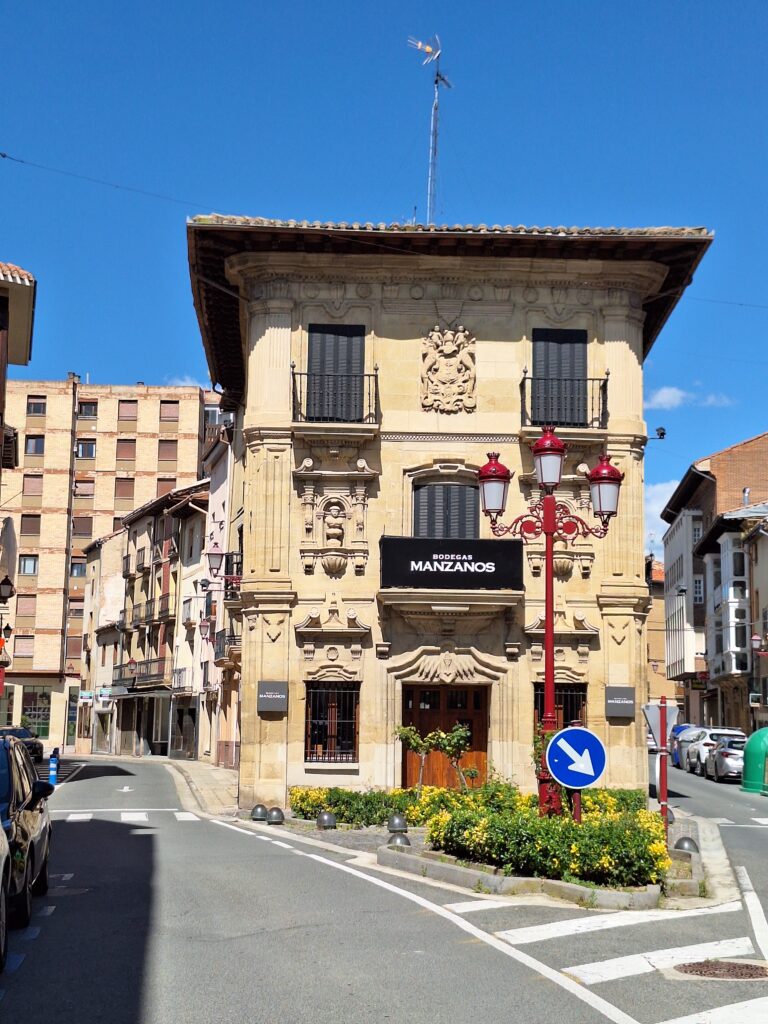
Where to Eat in Haro
Dining options in Haro range from tapas bars to Michelin-star restaurants.
Nublo
If you want something creative, make a reservation at Nublo, Haro’s only one-star restaurant. Chef Miguel Caño creates a tasting menu with fire at the core. There are only 30 seats, so make reservations.
If you want something more traditional here are some other options:
Las Caños
Adjacent to Nublo lies the Caño family restaurant started by chef Miguel Caño’s grandmother. Established in 1930, the focus has always been on local, market, and seasonal ingredients such as pollo al ajillo (Spanish garlic chicken). For oenophiles, check out their wine list with lesser-known Rioja labels. This is family dining and hospitality at its best.
Beethoven I, II, or III
Step back in time in any of the Beethoven restaurants. These traditional taverns specialize in Riojan cuisine such as red peppers stuffed with cod and roasted meats. Beethoven I was the original restaurant and opened in 1941.
Make reservations if you want to dine here. We walked in on a Saturday afternoon to all three restaurants, but they wouldn’t seat us. All the tables are reserved for the entire day.
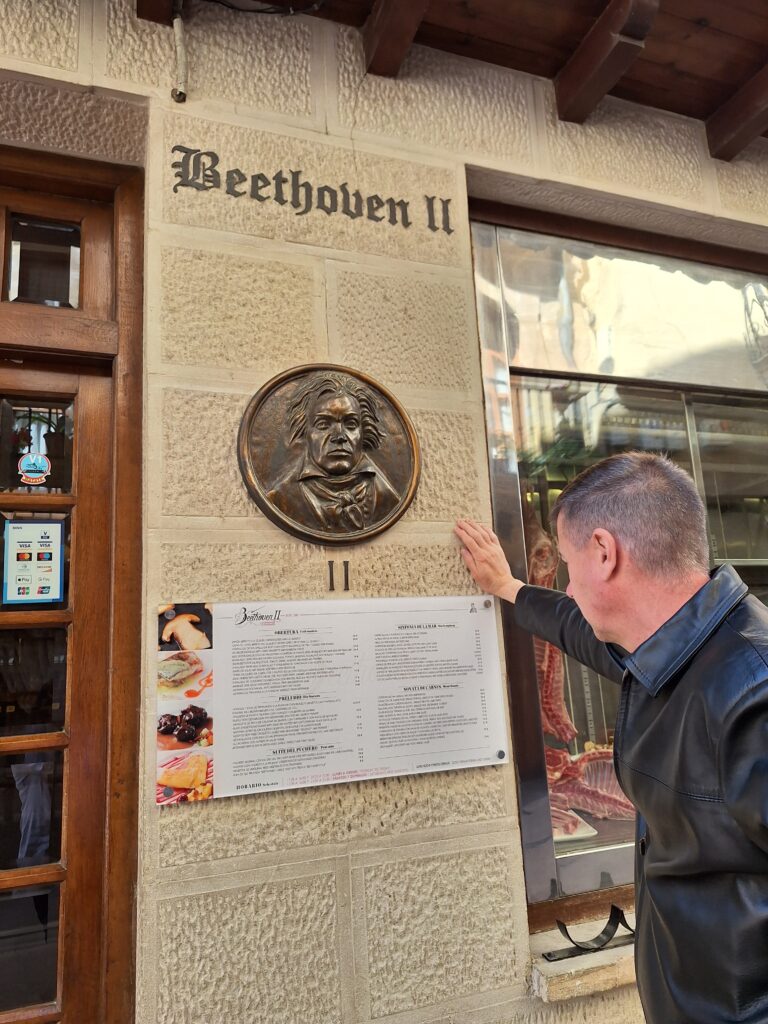
Asador Jarrero
Asador Jarrero is another favorite in the center of Haro offering traditional Riojan food. They serve traditional Riojan cuisine along with a few Italian and French dishes for variety, When you make a reservation, ask if you can be seated in their barrel-vaulted cellar instead of the main restaurant.
Las Cigueñas
Las Cigueñas (meaning The Storks) is in Plaza de la Paz. Their specialty is Riojan grilled fish, They have a daily menu and a special weekend menu. Because this restaurant is in the heart of Haro, make reservations. It was always busy even late at night.
El Rincon del Noble
For more old-world charm, dine at El Rincon del Noble. With its stone walls and colorful mountain murals, this restaurant is a foodie destination. Feast on lamb chops, tasty, moist lamb chops grilled on embers or oxtail slow-cooked in red wine.
Grocery Store
By the way, if you prefer to have a few nibbles in your room or have dietary issues, there is a large Mercadona supermarket near the Basílica de Nuestra Sra. de la Vega. The mural below is next to the walking bridge from the park to the Mercadona grocery store.
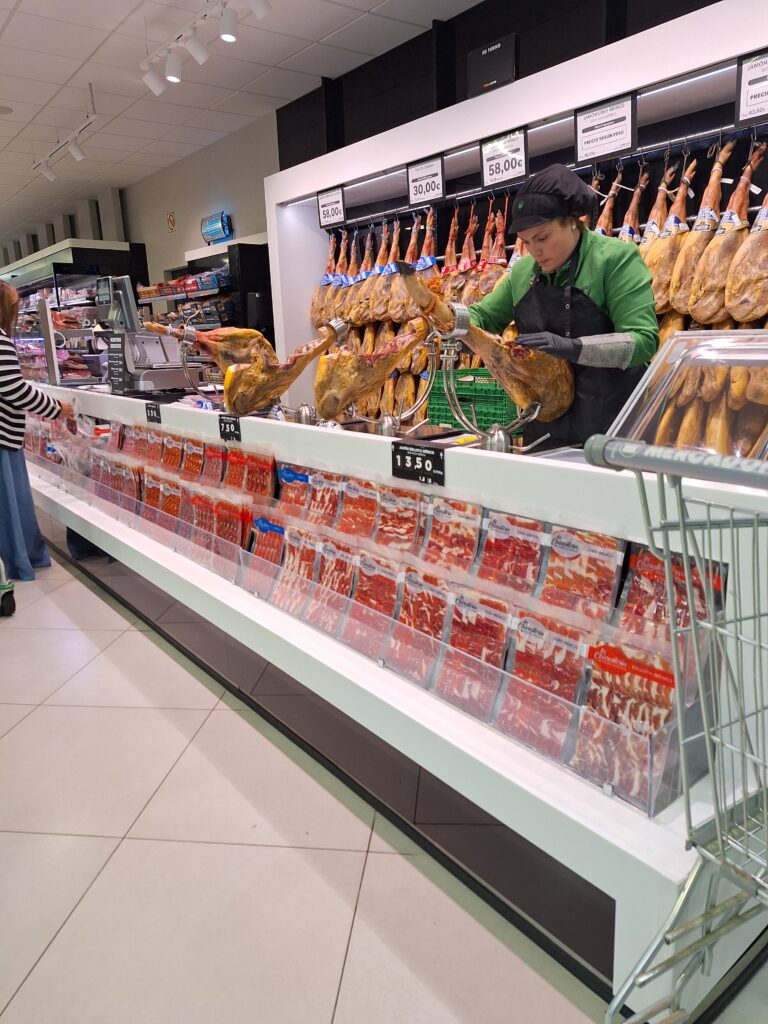
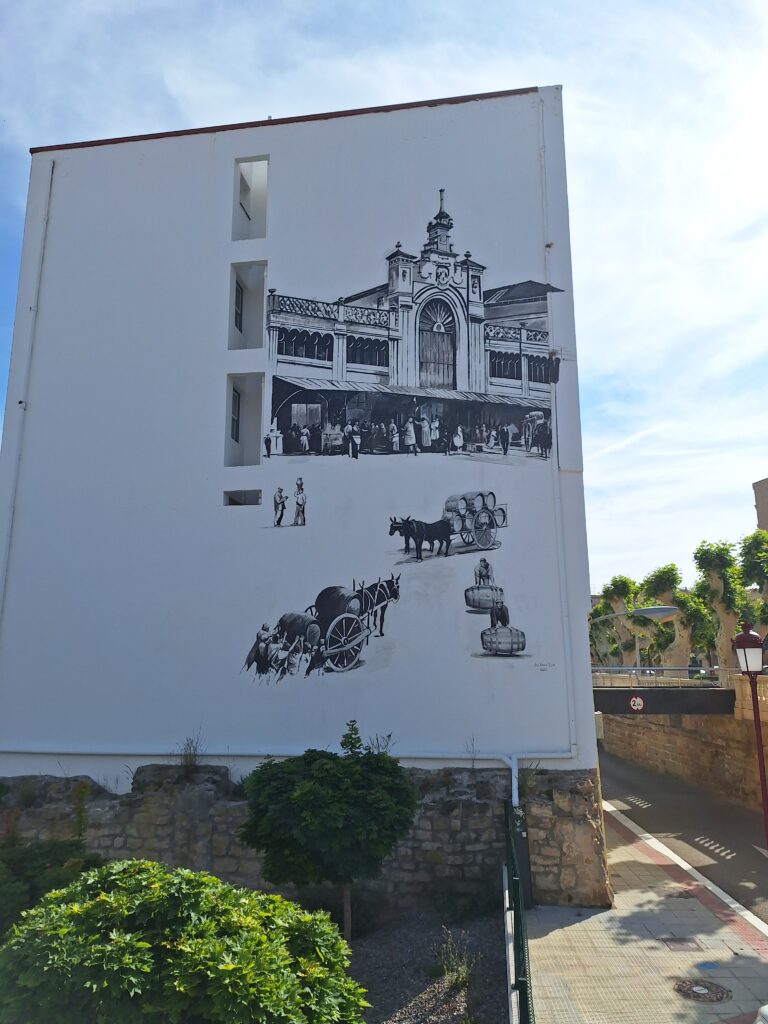
Where to Find the Best Tapas Bars in Haro
Haro, just like any other city in Spain, has tapas bars everywhere. But if you want to rub elbows with the locals and try to eat at as many places as possible, be strategic and follow the Herradura Route. This horse-shaped route starts at Plaza de la Paz, goes up Calle San Tomas, passes through the Plaza de San Martin, and goes down Calle San Martin back to the Plaza de la Paz. Or vice versa.
Either way, you’ll have plenty of options in tapas bars, restaurants, wine shops, and cafes. Just look for the locals eating and drinking inside and outside to know which ones are the good ones.
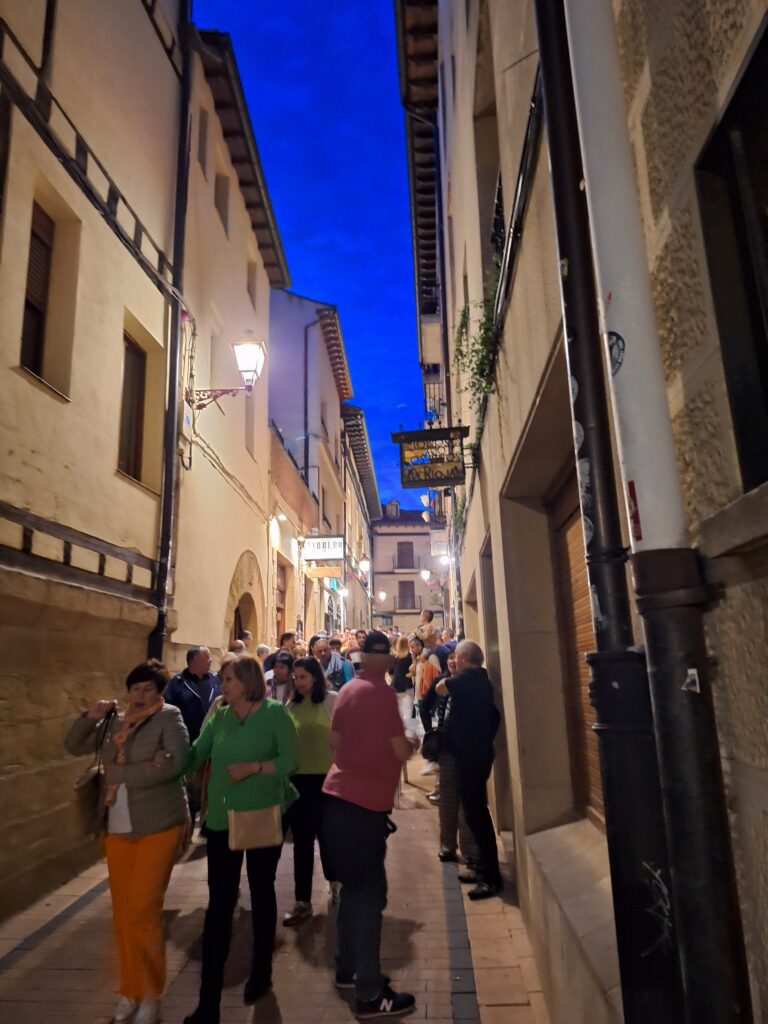
Where to Stay in Haro
If you plan on staying in Haro, which we hope you do, you have a range of options from luxury to apartments to stay in.
We rented an apartment through Booking.com called Apartamentos La Herradura Vinas. The bedrooms were small, but it had a full kitchen, air conditioning, and a gorgeous view of the Rioja landscape. They do require a minimum of a 2-night stay. It was perfect for two people.
If you need more room for four people, Apartamento REY ENEO is larger and sits right in between the old quarter and wineries.
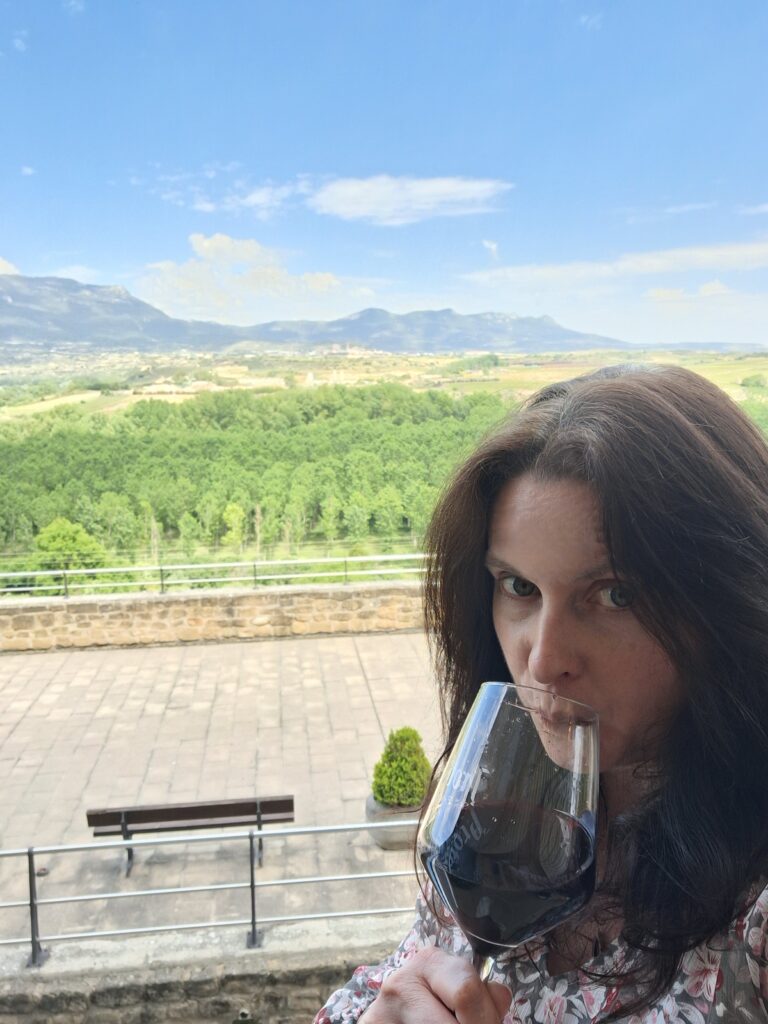
If you want a luxury hotel for a night or two, Eurostars Los Agustinos is a renovated 14th-century convent with spacious rooms and modern fixtures. For something a little less extravagant in the heart of the action, try Hotel Plaza De La Paz on the main plaza a few steps away from the tapas bars.
We hope you give Haro a little extra love besides a day tour trip. While some of the best wineries in Rioja (and Spain for that matter) are in Haro, their wine-making history and walkable town are a refreshing break from the big city destinations.

